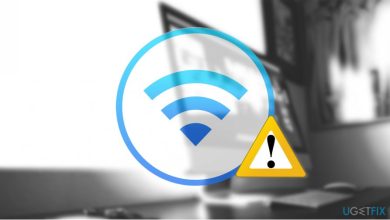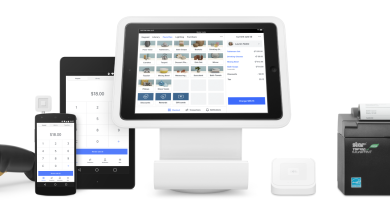Digital Transformation in Healthcare 2022 – Trends & Benefits

Digital transformation has become the most popular buzzword in business, including the healthcare industry. It’s not only about putting new technology in place; it’s also about rethinking how things are done and figuring out how they might be done better.
We all witnessed the enormous strain on worldwide health professionals, infrastructure, and facilities during the pandemic, which was all overwhelmed by the problems. As a result, the digital transformation in healthcare industry has emerged.
Technology is redefining healthcare and altering our perceptions of patient care, clinics, and medical facilities. Healthcare technology investment is expected to reach approximately $660 billion by 2025, despite the global health sector being valued at less than $1 trillion.
According to Statista, global investment in digital transformation has already topped $1.3 trillion. And it is increasing at a stunning 10.4% year on year.
As we progress, it is critical to keep an eye on the trends that will affect healthcare technology in 2022. Although legacy software and infrastructure are vital to the operation of contemporary hospitals and care centres, we must evaluate how old systems may merge with newer technology or be replaced with more dependable systems in the future.
The focus should be on improving performance, productivity, efficiency, and security without jeopardising reliability and accessibility.
What is Digital Transformation in Healthcare?
In healthcare, digital transformation refers to technological advancements that enhance processes, improve the patient experience, and speed up the work of physicians. This sector, which serves as a link between technology and healthcare, makes use of cutting-edge technology to improve performance metrics and organisational efficiency.
Digital transformation involves time and resources, and it needs a high level of expertise and experience.
What began with the digitization of medical data and the ultimate standardisation of the electronic health record system has progressed into increasingly complex innovations.
Cloud, IoT, AI, network connectivity, and other technologies are being employed in the digital health transition to give the best treatments.
Digital Transformation Trends
Following are the emerging Digital Transformation Trends:
Artificial Intelligence
In the healthcare industry, artificial intelligence offers several advantages. It aids in rapid diagnosis and accelerates the interpretation of test results, allowing physicians to select the most effective pharmaceutical compositions, avoid identity theft, reduce medical errors, and give a better customer experience.
AI allows for quicker decision-making, data processing, and diagnostics. This allows professionals to deliver the greatest possible treatment to patients by employing the most appropriate strategy.
The pharmaceutical Industry may use machine learning to generate more effective drugs as well as improve medical research and tests.
Wearable Technology Monitoring Health
Wearable technology promotes preventative healthcare by allowing individuals to track their interior problems.
For example, the usage of oximeters to assess the patient’s oxygen level has grown during COVID-19.
Smartwatches and fitness bands continuously monitor a person’s health and provide recommendations. If a person has atrial fibrillation, the Apple Watch can transmit real-time notifications to doctors and family members.
Blockchain
Blockchain generates detailed transaction histories in a secure method to decrease medical fraud. Its decentralised architecture improves security since its data is unalterable. Claims are processed promptly since a smart payment option is available.
Furthermore, Blockchain Solutions enable instant access to digitised health records, enabling more advanced patient care.
On-Demand Healthcare Solution
As customers, we’re accustomed to receiving customer support at any time and from any location. This approach is also beginning to have an impact on the healthcare experience.
A few years ago, mobile phones, tablets, and laptop computers accounted for 65% of all contact between consumers and healthcare institutions.
People use the internet to study medical issues, discover basic health information, find physicians, hospitals, and medical facilities, and schedule medical appointments. 44% of consumers who study a medical institution online using a mobile device will arrange an appointment right away.
AR and VR
The augmented reality (AR) and virtual reality (VR) healthcare businesses will be value at about $10 billion by 2028. These promising technologies allow healthcare practitioners to test or try out new ideas and methods before putting them into practise in the real world.
The technology’s realistic 3D modeling of human organs and tissues allows researchers and clinicians to digitally test drugs to anticipate how a living human might respond. AR and VR technologies have the potential to reduce animal testing and accelerate human clinical trials.
Chatbots
Chatbots are already being use in several businesses, and they are progressively making their way into the healthcare industry. According to Statista market research, the chatbot industry will be worth around 1.25 billion US dollars in 2025.
Chatbots are now employe in two ways: patient-only chatbots that track patients’ health data and patient-clinician bots that function as connectors between the two groups. The former is entirely represent by a computer that responds with evidence-base replies and courteous reminders.
When necessary, the latter incorporates human-to-human contact and can serve as a transmitter of medical test findings or assistance in scheduling patient visits.
Top Benefits of Digital Transformation for Healthcare
End-to-end Connectivity
The Internet of Things assists in the automation of patient care workflow through the use of healthcare mobility solutions and other cutting-edge technology. Innovative technology improves interoperability, machine-to-machine connection, data transmission, and information exchange.
When medical practitioners identify illnesses and problems in patients, they can modify their therapy.
Timely Monitoring
Real-time monitoring is a lifesaver during heart failure, diabetes, and asthma episodes. Monitoring a patient’s condition with medical equipment enables the simple gathering and sharing of health data with a physician.
The wearable device provides real-time blood pressure, oxygen, and blood sugar readings, as well as weight and ECGs.
Data Analysis
It is impossible to keep and manage a large amount of patient-related data if the cloud is unavailable. Manually collecting data from a variety of devices and sources is a demanding undertaking even for administrators.
Data is evaluate in real-time, therefore there is no need for storage. Because of digital transformation, organisations may benefit from essential healthcare analytics and data-driven insights.
Reduced Costs
Despite early expenditures, digital healthcare app development reduces costs for both hospitals and patients in the long run. Hospitals may cut expenses by utilising data to estimate staffing capacity, giving assistance through apps and websites, and avoiding human errors.
Telemedicine apps provide patients with more economical medical care. Residents in rural and isolated places can save money on trips by using apps and connecting with healthcare providers from the comfort of their own homes.
Challenges of Digital Transformation in Healthcare
Establishing Business Needs
Making a compelling case for why a firm should prioritize digital transformation may be tough on its own. Your management may not even be aware that the firm is having problems, so it is vital to give a compelling narrative that paints a picture of why it has to adapt.
Budgetary Constraints
Healthcare is a government-funded industry, making it more difficult to secure more funds. Leaders must provide hard facts demonstrating how much money is lost as a result of inefficient processes. Furthermore, they must show which technology can handle these issues and how much money can be save to get sufficient funding.
Data Security
When it comes to digital transformation, all healthcare institutions are concerned about cybersecurity. This is because cyberattacks often target private, sensitive, and highly valued personal health data, which can impair patient treatment.
For example, a malware attack on a private hospital may appear to be low-risk. However, such an assault might easily jeopardise patients’ privacy, resulting in a hospital’s reputation being tarnishe, as well as fraud, discrimination, and other difficulties.
As a result, taking the require actions to increase security and avoid cyberattacks is strongly urged.
Conclusion
While healthcare is undergoing a huge digital revolution, it is critical to realise that this is merely the beginning. Integrating healthcare and technology has mostly resulted in healthcare being more dependent, inclusive, robust, and comprehensive.
Digital transformation in healthcare industry substantially assists in automating and decreasing redundancies, as well as generating fresh norms for providing holistic treatment. In conclusion, digital healthcare has the potential to save lives.
With new technologies being tested daily, it is realistic to anticipate that the digital transformation of healthcare will be one of the most reliable measures of development.




